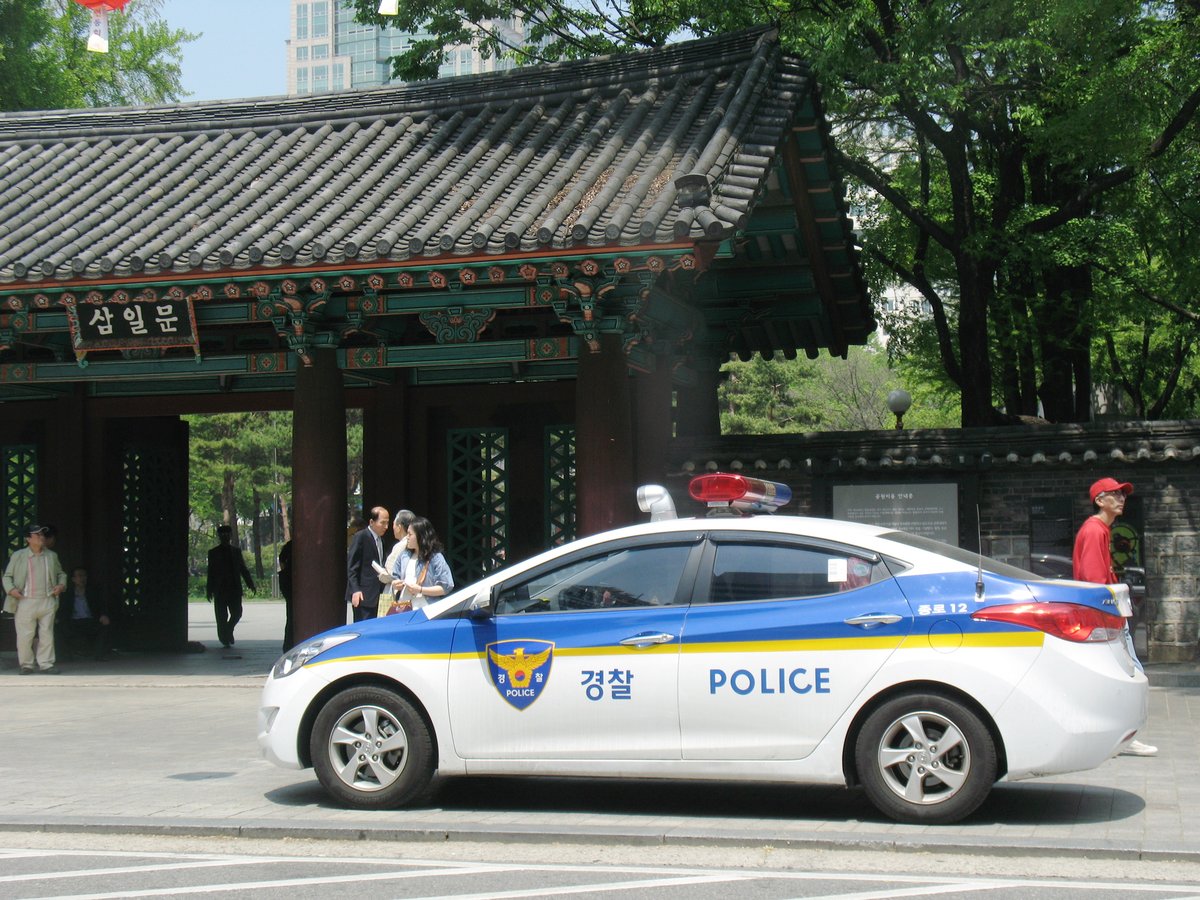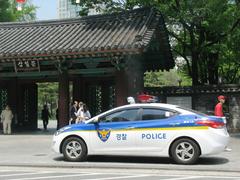
Seoul Jongno Police Station: Visiting Hours, Tickets, and Historical Significance Guide
Date: 15/06/2025
Introduction
Nestled in the heart of Seoul’s storied Jongno District, the Seoul Jongno Police Station stands as both a pillar of public safety and a witness to Korea’s modern history. While it serves primarily as a functioning law enforcement facility, its proximity to major historical sites, the Korean National Police Heritage Museum, and vibrant cultural landmarks makes it a unique destination for visitors eager to explore Seoul’s past and present. This detailed guide covers everything you need to know about visiting the Jongno Police Station area: from historical context and museum hours, to nearby attractions, accessibility, and travel tips. For official updates and trip planning, consult the Seoul Tourism Official Site and Visit Korea’s Police Heritage Museum page.
Table of Contents
- Introduction
- Visiting Hours & Ticket Information
- Historical Significance & Key Events
- How to Get There & Accessibility
- Nearby Attractions & Travel Tips
- Cultural Etiquette
- Frequently Asked Questions (FAQ)
- Visuals & Media Recommendations
- References
Visiting Hours & Ticket Information
Seoul Jongno Police Station is an operational facility and does not offer public tours or require tickets. However, visitors interested in Korean law enforcement history should explore the adjacent Korean National Police Heritage Museum:
- Museum Hours: Tuesday–Sunday, 09:30–17:30 (Closed Mondays and major Korean holidays)
- Admission: Free
- Guided Tours: Available for groups by reservation; contact in advance for details
- Location: Within walking distance of Jongno 3-ga Station (Lines 1, 3, and 5)
For up-to-date information, check the Police Heritage Museum’s official page.
Historical Significance & Key Events
The roots of Seoul Jongno Police Station trace back to the late 19th century, a time when Korea was rapidly modernizing. Under Japanese colonial rule (1910–1945), the station became a symbol of colonial authority and played a role in suppressing independence movements. One defining episode was the 1923 bombing by independence activist Kim Sang-ok, commemorated in Korean history as a bold act of resistance.
After liberation in 1945, the police station was restructured to serve the Republic of Korea, adapting to the capital’s rapid urbanization and evolving civic needs. Today, it stands as both a guardian of public safety and a living testament to Korea’s resilience and transformation.
For a comprehensive historical overview, visit the Namu Wiki page.
How to Get There & Accessibility
By Subway:
- Jongno 3-ga Station (Lines 1, 3, and 5) is the closest, approximately a 5-minute walk to the station and museum.
- Jonggak (Line 1, Exit 2) and Anguk (Line 3, Exit 6) stations also provide easy access.
By Bus:
- Several city bus routes serve Jongno; use local apps like KakaoMap for real-time navigation.
Accessibility:
- The museum is wheelchair-accessible, with ramps and elevators.
- Contact the museum in advance for special accommodation needs.
Nearby Attractions & Travel Tips
Jongno District is Seoul’s cultural and historical epicenter. Consider combining your museum visit with these top sites:
- Gyeongbokgung Palace: The largest Joseon Dynasty palace; Changing of the Guard at 10:00 & 14:00 (Hey Roseanne)
- Insadong: Renowned for traditional crafts, tea houses, and art galleries (Svadore)
- Bukchon Hanok Village: Picturesque lanes of preserved traditional houses, open 24 hours
- Cheonggyecheon Stream: Urban stream with walking paths and evening illumination
- Jogyesa Temple: Center of Korean Zen Buddhism, open 05:00–21:00
Travel Tips:
- Early mornings on weekdays are best to avoid crowds.
- Wear comfortable shoes for walking.
- Use apps like Subway Korea or KakaoMap for transit help (Lonely Planet).
- Events near government buildings may affect subway station operations (Korea JoongAng Daily).
Cultural Etiquette
- Greet officers politely; a slight bow and “gyeongchal-gwan-nim” (경찰관님) is respectful.
- Dress modestly when visiting government facilities.
- Photography inside the police station is prohibited unless explicitly allowed (Visit Seoul).
- English proficiency among officers varies; bring written information or use translation apps.
Frequently Asked Questions (FAQ)
Q: Is the Jongno Police Station open for tours?
A: No, it is a functional law enforcement building. The adjacent Police Heritage Museum welcomes visitors.
Q: Is there an admission fee for the museum?
A: Admission is free.
Q: Are guided tours available at the museum?
A: Yes, for groups and by reservation. Check ahead for availability.
Q: How can I report a lost item?
A: Visit the police station’s front desk, open 24/7. Bring identification for assistance.
Q: Is the area wheelchair accessible?
A: Yes, the museum and most major attractions in Jongno provide accessible facilities.
Q: Is the station safe and tourist-friendly?
A: Jongno is among Seoul’s safest districts, with visible police and tourist police presence (Maeil Business Newspaper).
Visuals & Media Recommendations
To enhance your visit:
- Explore virtual tours and high-resolution images on the Seoul Tourism Official Site and Visit Korea.
- When sharing photos online, use alt text such as “Korean National Police Heritage Museum exhibit,” “Jongno district historic site,” or “Gyeongbokgung Palace near Jongno Police Station” for better accessibility and searchability.
References and Further Reading
- Seoul Jongno Police Station: Visiting Hours, Tickets, History & Nearby Attractions, 2025, Seoul Metropolitan Government Tourism Office
- Visiting Jongno Police Station: A Historical and Cultural Landmark in Seoul, 2025, Korean National Police Museum
- Jongno Police Station Visiting Hours, Location, and Tourist Safety Guide in Seoul, 2025, Namu Wiki
- Jongno District Seoul: Visiting Hours, Tickets & Top Historical Sites, 2025, En-Vols & Hey Roseanne
Conclusion & Call to Action
Seoul’s Jongno Police Station offers more than a glimpse into civic operations—it is a gateway to the fascinating interplay between Korea’s historical journey and contemporary culture. Whether delving into the stories of independence fighters, touring nearby palaces and neighborhoods, or simply seeking safe, practical assistance during your travels, the Jongno area has much to offer.
Plan your visit with the Audiala mobile app for self-guided tours, real-time updates, and expert travel tips. Stay connected with us on social media for the latest news and in-depth guides on Seoul’s historical and cultural treasures.













































































































































































































